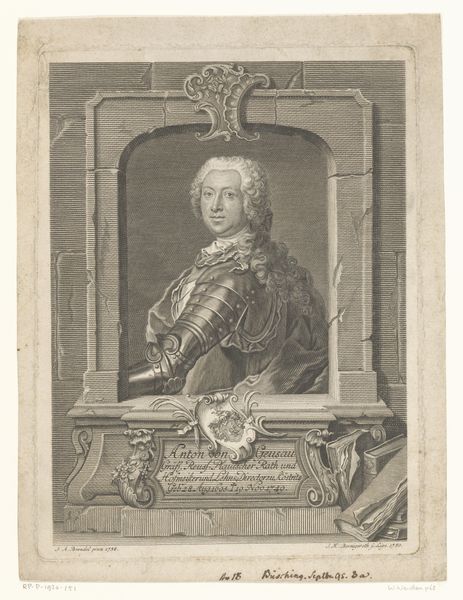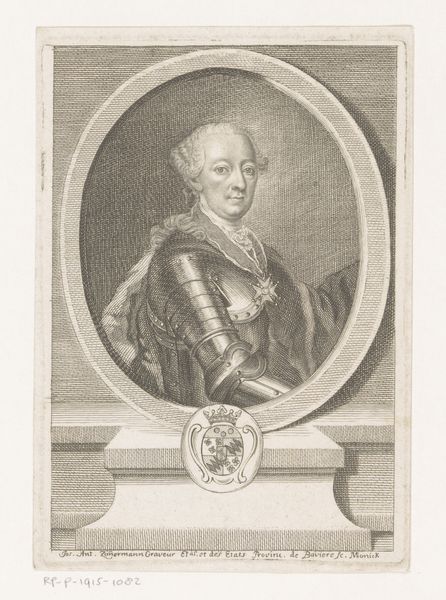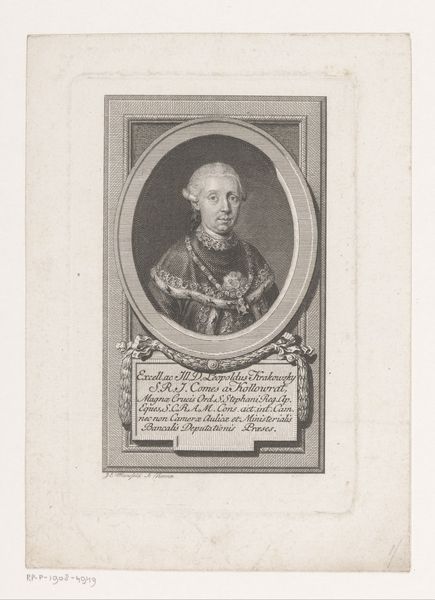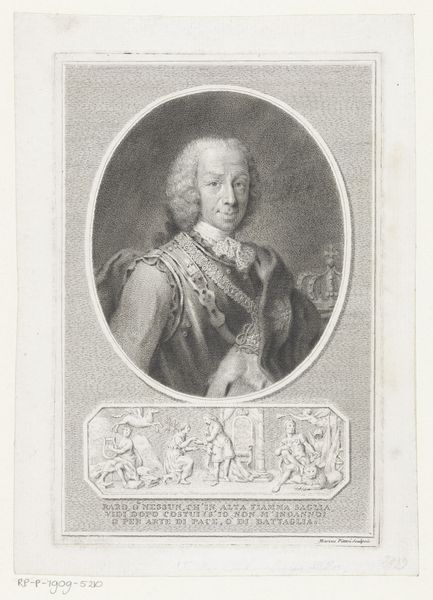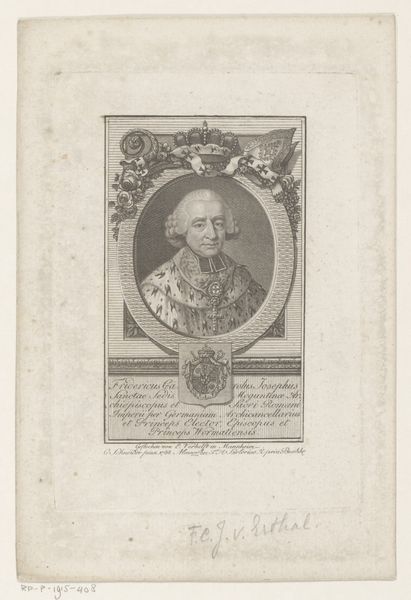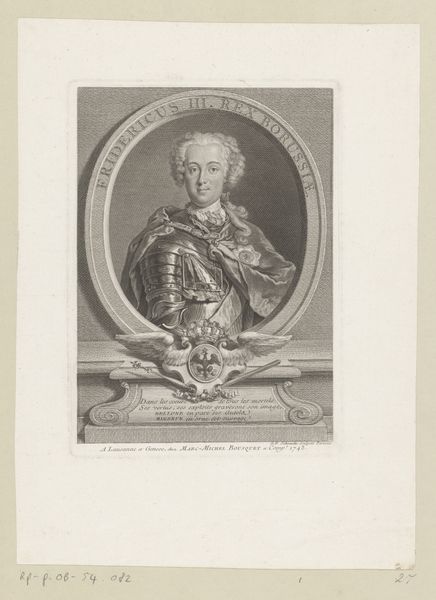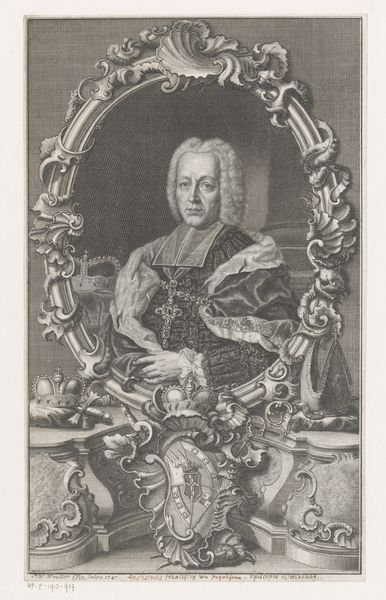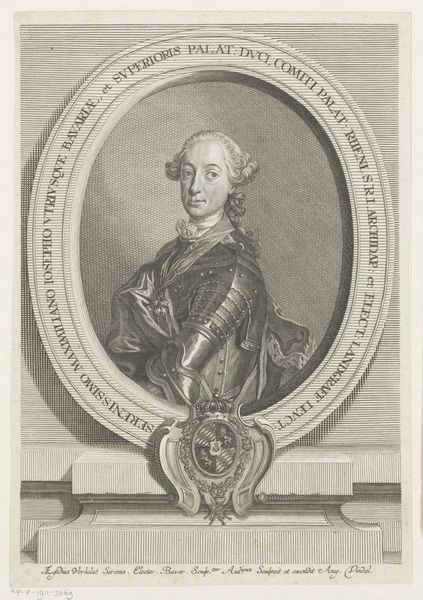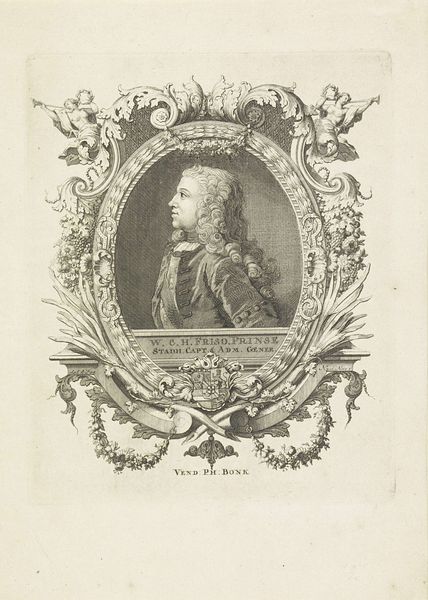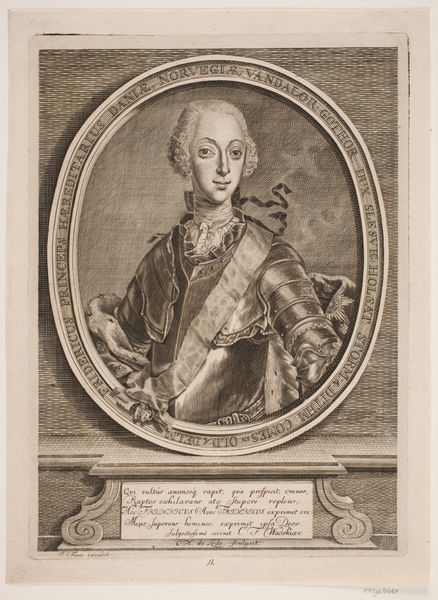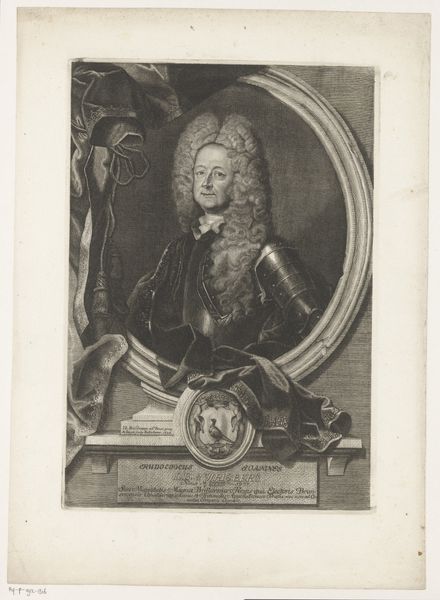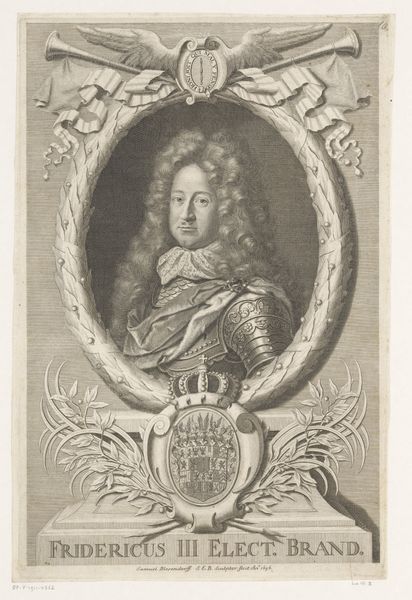
Dimensions: height 191 mm, width 141 mm
Copyright: Rijks Museum: Open Domain
Editor: So, here we have Joseph Anton Zimmermann's "Portret van Max Emanuel von Toerring-Jettenbach," created sometime between 1750 and 1797. It’s an engraving. The details are just incredible. What compositional elements really stand out to you? Curator: I am struck by the work's engagement with layering. Notice how the ornamental frame is in dialogue with the subject's armor and coat. Do you observe how this interplay establishes depth, or perhaps how it fractures our perspectival expectations? The semiotic impact of texture creates formal relationships between subject and background. Editor: I see what you mean. The frame isn’t just a border; it’s an active part of the composition that reflects Max Emanuel von Toerring-Jettenbach’s own elaborate garments and presentation. What's the purpose of these artistic devices? Curator: Well, the elaborate frame draws your eyes into the detailed engravings. Then note how the portrait captures the individual’s expression. Can we connect the ornate composition to the status of the subject? The surface texture gives us the codes needed to grasp this baroque-style image. Editor: Yes, the ornamentation and his armour, they must signal importance, power... Does the quality of line, or the choice of monochrome rather than colour impact meaning? Curator: Absolutely. The high contrast and fine lines lend the piece a sense of gravity and timelessness. The reduction to essentials allows Zimmermann to demonstrate complete technical control over the medium of engraving. The print achieves a structured formality. Editor: That makes sense. I hadn't really considered how much the lack of color contributes to that sense of gravity and formality. Thank you. Curator: The exercise of breaking down the relationship between visual elements brings a complete perspective to this work.
Comments
No comments
Be the first to comment and join the conversation on the ultimate creative platform.

